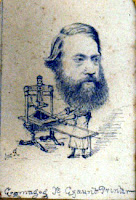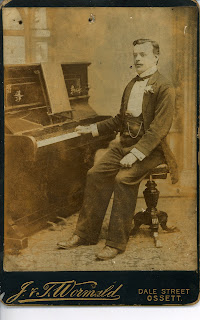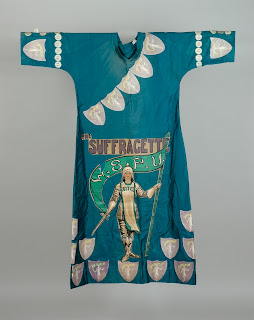As a recent graduate of Archaeology, I was very grateful for the opportunity to work with the prehistoric collections at Leeds Museum Discovery Centre. During my time here I have catalogued hundreds of flint and stone tools attributed to the the Middle Palaeolithic right through to the Bronze Age. That's over 25,000 years of human history from all over the world. I find it fascinating that over 95% of our lives as modern humans has been lived in the prehistoric period and yet there is still so much we don't know about this major part of our history.
After spending a few weeks looking at Palaeolithic flint hand axes, knives, arrowheads and scrapers (25,000-10,000 BC), I looked at some later artefacts from the Neolithic period (4,000-2,500 BC), and what did I find? More flint knives, arrowheads and scrapers! What struck me most was that, although technology had clearly improved, the types of tools being produced were more or less the same, and fulfilled the same purpose.
The artefact I am choosing to present here grabbed my attention for two reasons. Firstly, it has a unique shape, and secondly, it gives us an insight into life in Neolithic Britain and helps to dispel some common assumptions. The object is a Neolithic scraper from the Yorkshire seaside town of Bridlington (accession number LEEDM.D.1964.0011.005). It was donated to Leeds Museum in 1917 by James Edward Bedford and is a part of a collection of over 300 flint scrapers, arrowheads and knives from Bridlington.
Spokeshaves would be used to hollow out wood or bone, and remove bark from wood. They could also have been used for hide working, where hides were scraped to remove meat and tendons from the bones of animals.
The Neolithic period is known for the 'Neolithic Revolution', when people first started to move from a hunter-gatherer way of life to a sedentary lifestyle , occupying year-round settlements and domesticating animals to become the first farmers. But this transition was not instantaneous, illustrated by objects like this. Tools like scrapers were multi-purpose, very portable and easily re-used, suiting a mobile hunter-gatherer society. This object is part of a huge collection of portable Neolithic tools collected from Bridlington, hinting at a permanent settlement here. But research presented by Professor Julian Thomas suggests that Bridlington may have been a place where people continued to return to cyclically or sporadically, perhaps to exploit local resources of stone and flint.
Ultimately what this small piece of flint has taught me is that spokeshaves (scrapers) were a very useful bit of kit for hunter-gatherers. We can infer that people in the Neolithic weren't ready to give up their mobile way of life just yet, and in fact farming probably took around two thousand years to spread across Britain, making the Neolithic the last major flint tool-making period.
Author: Amy Davies, Leeds Museums and Galleries Intern 2011








 Unstable bricks were taken out, cleaned, and labelled so that they could go back in the same location they came from. The oak lintel had deteriorated so badly from Death watch beetle that it had to be replaced.
Unstable bricks were taken out, cleaned, and labelled so that they could go back in the same location they came from. The oak lintel had deteriorated so badly from Death watch beetle that it had to be replaced. This is a picture of the plastered and painted window reveal, from Tudor times, one of the features that was going to be left revealed. The next picture shows the wall re-instated to within approximately 30 cm of the window, but leaving the various layers exposed, all behind plate glass. There is interpretation still to be done, but the installation is finished.
This is a picture of the plastered and painted window reveal, from Tudor times, one of the features that was going to be left revealed. The next picture shows the wall re-instated to within approximately 30 cm of the window, but leaving the various layers exposed, all behind plate glass. There is interpretation still to be done, but the installation is finished.































